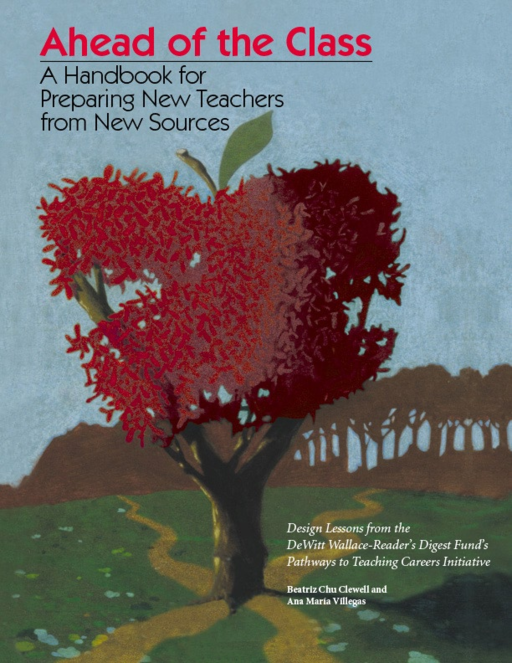Breadcrumb
- Wallace
- Reports
- Ahead Of The Class Handbook For ...
Ahead of the Class
Handbook for Preparing New Teachers from New Sources

Summary
How we did this
This handbook is based on results and lessons learned from a six-and a-half year evaluation of the The Pathways to Teaching Careers Program. The evaluation began in 1994.
The handbook is intended to help practitioners replicate the success of the Pathways to Teaching Careers Initiative. Its goal was to reduce the K-12 urban and rural teacher shortage. It increased the number of well-prepared teachers in difficult-to-staff schools. This included schools in low-income areas.
Pathways launched in 1989 and was underway at 42 sites across the country by 1999. Teacher education programs and local school districts worked together to recruit aspiring teachers who were:
- paraprofessionals
- uncertified teachers
- returned Peace Corps volunteers.
The belief was that these three groups would have much relevant experience. With enough support and preparation they could become well-prepared K-12 teachers.
A multi-year evaluation of the program demonstrated its success. This handbook is based on that research. It provides step-by-step guidance for school districts and teacher preparation programs to launch similar programs.
Features of Pathways’ Successful Program
The 42 participating sites each operated somewhat differently but had these common features:
- A partnership between a teacher education program that prepared participants and
one or more high-need school districts that employed them - A process that combined traditional and nontraditional criteria to select participants
- A rigorous and innovative teacher education curriculum tailored to the
needs of nontraditional participants that also built on their strengths - Varied types of support for Pathways candidates while they pursued college degrees
and teaching certificates.
The handbook provides detailed guidance on:
- Creating a partnership between a teacher preparation program and one or more school districts
- Overseeing the implementation of the Pathways model and making modifications as needed
- Overcoming barriers to successful partnerships
- Recruiting and selecting program candidates from pools of paraprofessionals, uncertified teachers and returning Peace Corps volunteers
- Building an innovative curriculum to prepare new teachers
- Supporting non-traditional candidates to complete teaching credentials
- Supporting new teachers on the job
- Estimating program costs
Key Takeaways
- Pathways to Teaching Careers Initiative is a proven model for recruiting and preparing nontraditional teaching candidates to become successful teachers in hard-to-staff urban and rural schools.
- Teacher preparation programs and school districts can successfully work together to recruit and prepare paraprofessionals, uncertified teachers, and returning Peace Corp volunteers to become teachers.
- Nontraditional candidates have special strengths to consider. These include experience working with students in challenging schools or with people of different cultural and linguistic backgrounds.
- Many details go into making a successful preparation program for non-traditional students. These include processes for candidate recruitment, selection, preparation, tailored support, and ongoing project management.
What We Don't Know
- What is the link between the Connected Arts Learning framework and youth well-being in general?
- What approaches beyond the five explored in this report might be identified and used to create a Connected Arts Learning model?


